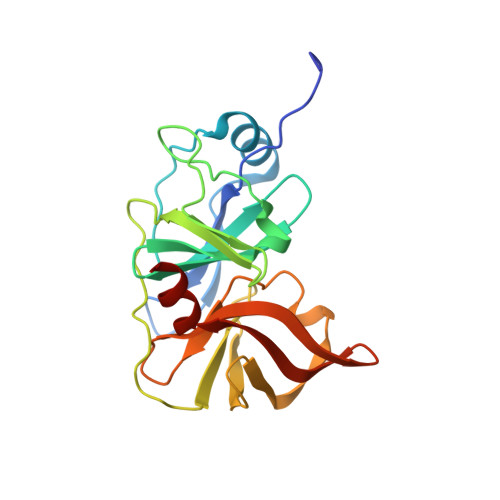Hepatitis C Virus NS3/4A Protease Inhibitors Incorporating Flexible P2 Quinoxalines Target Drug Resistant Viral Variants.
Matthew, A.N., Zephyr, J., Hill, C.J., Jahangir, M., Newton, A., Petropoulos, C.J., Huang, W., Kurt-Yilmaz, N., Schiffer, C.A., Ali, A.(2017) J Med Chem 60: 5699-5716
- PubMed: 28594175
- DOI: https://doi.org/10.1021/acs.jmedchem.7b00426
- Primary Citation of Related Structures:
5VOJ, 5VP9 - PubMed Abstract:
A substrate envelope-guided design strategy is reported for improving the resistance profile of HCV NS3/4A protease inhibitors. Analogues of 5172-mcP1P3 were designed by incorporating diverse quinoxalines at the P2 position that predominantly interact with the invariant catalytic triad of the protease. Exploration of structure-activity relationships showed that inhibitors with small hydrophobic substituents at the 3-position of P2 quinoxaline maintain better potency against drug resistant variants, likely due to reduced interactions with residues in the S2 subsite. In contrast, inhibitors with larger groups at this position were highly susceptible to mutations at Arg155, Ala156, and Asp168. Excitingly, several inhibitors exhibited exceptional potency profiles with EC 50 values ≤5 nM against major drug resistant HCV variants. These findings support that inhibitors designed to interact with evolutionarily constrained regions of the protease, while avoiding interactions with residues not essential for substrate recognition, are less likely to be susceptible to drug resistance.
Organizational Affiliation:
Department of Biochemistry and Molecular Pharmacology, University of Massachusetts Medical School , Worcester, Massachusetts 01605, United States.

















